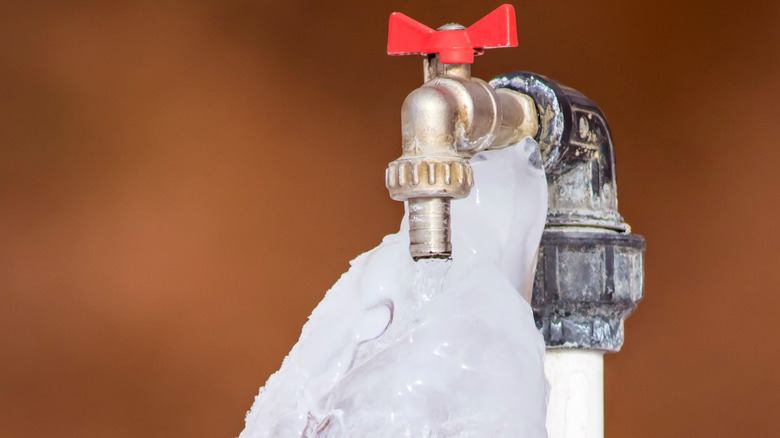Protecting Against Frozen Plumbing in Winter: Critical Advice
Protecting Against Frozen Plumbing in Winter: Critical Advice
Blog Article
This post on the next paragraphs relating to Winter Plumbing Precautions: Preventing Frozen Pipes is absolutely remarkable. Give it a go and make your own personal assumptions.

Winter can ruin your pipes, particularly by freezing pipelines. Right here's just how to prevent it from occurring and what to do if it does.
Intro
As temperature levels drop, the danger of frozen pipelines increases, potentially bring about costly repair services and water damage. Comprehending how to prevent icy pipelines is essential for house owners in cold climates.
Comprehending Icy Pipelines
What creates pipes to ice up?
Pipes ice up when exposed to temperature levels below 32 ° F (0 ° C) for expanded periods. As water inside the pipelines ices up, it expands, taxing the pipe wall surfaces and potentially triggering them to break.
Risks and problems
Icy pipelines can cause water supply interruptions, residential property damage, and pricey repair services. Burst pipes can flood homes and cause comprehensive structural damage.
Indications of Frozen Water Lines
Determining frozen pipes early can prevent them from rupturing.
Exactly how to identify frozen pipelines
Try to find lowered water circulation from taps, unusual odors or sounds from pipes, and visible frost on exposed pipelines.
Prevention Tips
Insulating at risk pipes
Cover pipes in insulation sleeves or make use of warm tape to protect them from freezing temperature levels. Focus on pipelines in unheated or outside locations of the home.
Heating strategies
Keep indoor spaces adequately heated up, specifically locations with pipes. Open cupboard doors to permit warm air to distribute around pipelines under sinks.
Safeguarding Exterior Pipes
Garden pipes and outdoor faucets
Separate and drain pipes garden hose pipes before winter season. Set up frost-proof faucets or cover exterior taps with shielded caps.
What to Do If Your Pipes Freeze
Immediate activities to take
If you believe frozen pipes, keep faucets open up to eliminate stress as the ice thaws. Make use of a hairdryer or towels taken in warm water to thaw pipelines gradually.
Long-Term Solutions
Structural changes
Take into consideration rerouting pipes away from exterior walls or unheated areas. Include additional insulation to attics, basements, and crawl spaces.
Upgrading insulation
Buy high-grade insulation for pipes, attics, and walls. Appropriate insulation aids preserve constant temperatures and minimizes the danger of frozen pipelines.
Conclusion
Preventing icy pipes needs proactive procedures and fast reactions. By recognizing the causes, indications, and safety nets, property owners can secure their pipes during cold weather.
Helpful Tips to Prevent Frozen Pipes this Winter
UNDERSTANDING THE BASICS: WHY PIPES FREEZE AND WHY IT’S A PROBLEM
Water freezing inside pipes is common during the winter months, but understanding why pipes freeze, and the potential problems it can cause is crucial in preventing such incidents. This section will delve into the basics of why pipes freeze and the associated problems that may arise.
THE SCIENCE BEHIND FROZEN PIPES
When water reaches freezing temperatures, it undergoes a physical transformation and solidifies into ice. This expansion of water as it freezes is the primary reason pipes can burst. As the water inside the pipe freezes, it expands, creating immense pressure on the walls. If the pressure becomes too great, the pipe can crack or rupture, leading to leaks and water damage.
FACTORS THAT CONTRIBUTE TO PIPE FREEZING
Low Temperatures: Extremely cold weather, especially below freezing, increases the risk of pipes freezing. Uninsulated or Poorly Insulated Pipes: Pipes located in unheated areas, such as basements, crawl spaces, or attics, are more prone to freezing. Insufficient insulation or lack of insulation altogether exacerbates the problem. Exterior Wall Exposure: Pipes running along exterior walls are susceptible to freezing as they encounter colder temperatures outside. Lack of Heating or Temperature Regulation: Inadequate heating or inconsistent temperature control in your home can contribute to frozen pipes. PROBLEMS CAUSED BY FROZEN PIPES
- Pipe Bursting: As mentioned earlier, the expansion of water as it freezes can cause pipes to burst, resulting in significant water damage.
- Water Damage: When pipes burst, it can lead to flooding and water damage to your property, including walls, ceilings, flooring, and personal belongings.
- Structural Damage: Prolonged exposure to water from burst pipes can compromise the structural integrity of your home, leading to costly repairs.
- Mold and Mildew Growth: Excess moisture from water damage can create a favorable environment for mold and mildew growth, posing health risks to occupants.
- Disrupted Water Supply: Frozen pipes can also result in a complete or partial loss of water supply until the issue is resolved.
WHY CERTAIN PIPES ARE MORE PRONE TO FREEZING
- Location: Pipes located in unheated or poorly insulated areas, such as basements, crawl spaces, attics, or exterior walls, are at higher risk of freezing.
- Exterior Pipes: Outdoor pipes, such as those used for irrigation or exposed plumbing, are particularly vulnerable to freezing as they are directly exposed to the elements.
- Supply Lines: Pipes that carry water from the main water supply into your home, including the main water line, are critical to protect as freezing in these lines can affect your entire plumbing system.
- Underground Pipes: Pipes buried underground, such as those connected to sprinkler systems or outdoor faucets, can be susceptible to freezing if not properly insulated.
https://busybusy.com/blog/helpful-tips-to-prevent-frozen-pipes-this-winter/
:strip_icc()/snow-outdoor-faucet-pipes-4af65d1e5e904fb1aa7bf74071fe5d89.jpg)
We hope you liked our topic on 6 Ways to Prevent Frozen Pipes. Thanks a ton for taking a few minutes to read our piece of content. In case you appreciated our article if you please be sure to share it. Thanks a lot for your time invested reading it.
Additional Resources Report this page